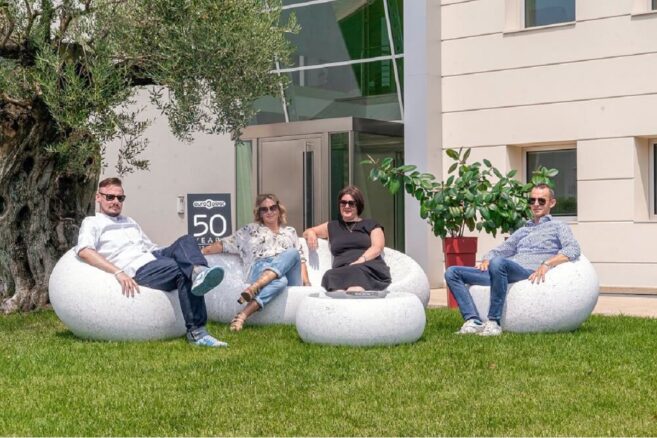A brand for the future: meeting with Sabina Boscato of Euro3plast
Founded in December 1974, Euro3plast’s first production run began on March 19, 1975, making it 50 years old. The founders have successfully managed the generational transition, and today the company is led by four young managers from the second generation. We met with Sabina Boscato, the Sales and Marketing Director for the Garden division and daughter of one of the founders.
Founded in 1974 in Vicenza, Euro3plast recently celebrated its 50th anniversary. Its story is a perfect example of successful “Made in Italy” entrepreneurship. Today, we know Euro3plast as one of the most important brands in the market for pots and furnishing solutions for both indoor and outdoor spaces, but this success is the result of a journey that started long ago.
The number “3” in Euro3plast reminds us that the founding partners were three: Alvise Boscato, Bruno Frigo, and Sergio Rabito. Though not yet thirty years old, on December 27, 1974, they decided to focus on the then-emerging field of plastic materials. Despite their young age, they had already gained experience in the sector in three different areas of competence: production, administration, and sales. The first production run started on March 19, 1975.
Initially, the company specialized in producing saucers, trays, and household items, including sink mats, colanders, and the highly sought-after polypropylene basins, then known as Moplen.
1983 marked a turning point for Euro3plast. The company decided to reduce the presence of household goods in its catalog and invest in the garden sector with the production of pots, containers, and planters.
In 1988, Bruno Frigo left the company, and Alvise Boscato and Sergio Rabito chose to focus exclusively on producing garden articles. During those years, studies began on the new technique of rotational molding, which, by 1992, would lead to the introduction of rotationally molded pots into Euro3plast’s product range.
The founders’ stories from those early years — documented in the book “Alle radici del futuro” (At the Roots of the Future)—reveal a history marked by many intuitions, significant hard work, and extensive travel. This was a time when the internet, PCs, faxes, and mobile phones didn’t exist: raw materials were loaded into the presses by hand, and clients had to be visited in person. It is also a family story, as Alvise Boscato and Sergio Rabito married two sisters, Maria Luigia and Marilena Perin, both of whom work within the company and have been central to its success.
Alvise Boscato and Sergio Rabito’s last great insight was to hand over the reins to the next generation, giving them total freedom and stepping back from day-to-day business life. This is a transition that is often announced but rarely carried out in practice. However, Euro3plast is now successfully led by siblings Sabina and Alan Boscato and by Giorgia Rabito and her husband Vittorio Moretti.
To understand the future of Euro3plast, as well as remember its past, we met with Sabina Boscato, the Sales and Marketing Director for the Garden division.
A Quality Partner for Garden Centers
You’ve been working at the company longer: how did you handle the generational shift?
Sabina Boscato: We grew up in the company; we used to come here as children, and we have always lived and worked for Euro3plast. Therefore, the generational shift started a long time ago. They confidently handed us the keys to the business: all decisions were effectively delegated to the second generation.
You specifically manage the specialized center channel, both domestically and internationally.You are already known as a high-quality brand: are there still margins for improvement?
Sabina Boscato: We have planned investments for the garden channel. For a few years now, we have been revamping the Italian sales network, adding new commercial agents, and we’ve started a major effort on our products. This includes new collections we will present shortly, such as Aromatika and Materika, many products with a significant restyling, and in-depth work on researching and choosing colors, which led to the new Sahara color schemes.
How do you choose the colors to launch next year?
Sabina Boscato: Choosing a color is difficult. Also because you have to do 50 tests before you get to the exact pot shade you imagined. The shape of a pot is important, but the right color is essential. We invest in research to follow the trends in the interior design and furniture markets: to understand in advance how the style of homes is changing, so we can pair pots with appropriate shapes and colors. In fact, we have already defined the 2026 color palette, which we will promote on social media and present at trade fairs.
When small appliances in acid green arrived, the pots started showing up as well…
Sabina Boscato: We’ve always kept up with market trends. Architects and engineers are currently building glass structures, so for the Kube design boxes, we selected colors like white, taupe, anthracite, and rust because they stylishly furnish these types of exteriors.
Indoor gardening is also growing rapidly: hobby farmers tend to be getting older, and the new generations often don’t continue the family farming traditions…
Sabina Boscato: We focused on rotational pots with an “appealing” cost and sizes suitable for indoor use. They feature special textures and colors that complement the world of furnishing. These are the new collections we will present in September: Materika, the new line that provides an unexpected tactile and visual effect, and Aromatika, pots that function as true furnishing accessories, ideal for creating your own small, fragrant green space.

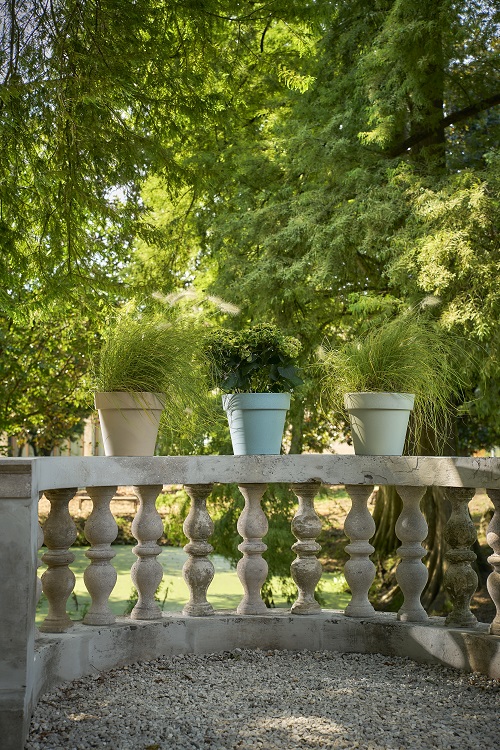
Re-evaluate the “vase product”
Garden centers should be showcasing the pot, yet it is frequently just displayed outdoors. Abroad, plants are offered with a pot that is capable of enhancing them, and these centres provide areas for customers to repot the plants.
Sabina Boscato: Since last year, together with the Milanese architect and stylist Marta Meda, at trade fairs we’ve started proposing a stand with different settings where the plants are paired with the pots. This exhibition concept has been particularly well-received. We want to show how the pot is not just a simple container, but an object that interprets stories, lifestyles, and contemporary environments.
The pot is a furnishing accessory capable of integrating into our homes and enhancing the presence of greenery. It’s a design object that creates beauty and emotion. The culture of the basic, simple pot prevails, when we should instead re-elevate it as a furnishing accessory: this is in everyone’s interest, ours but also that of the garden centers. The Aromatika collection, which we were discussing earlier, was created specifically to be paired with aromatic plants, styling the kitchen with both style and functionality, uniting two passions like gardening and cooking. It features colors and textures designed to draw the consumer towards a more structured pot.
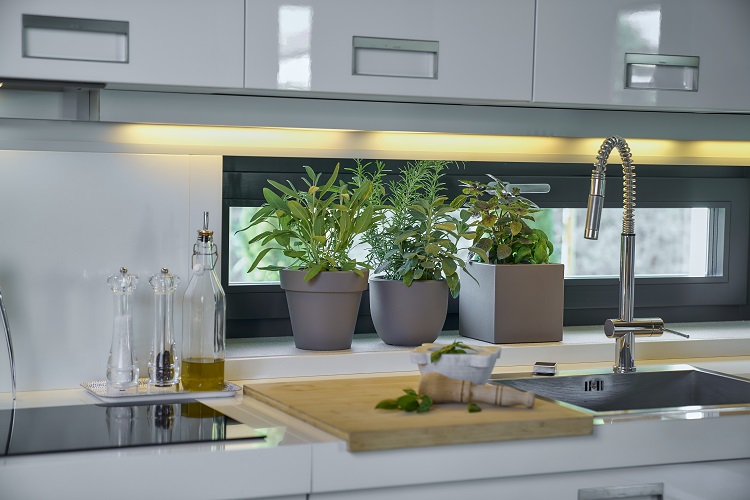
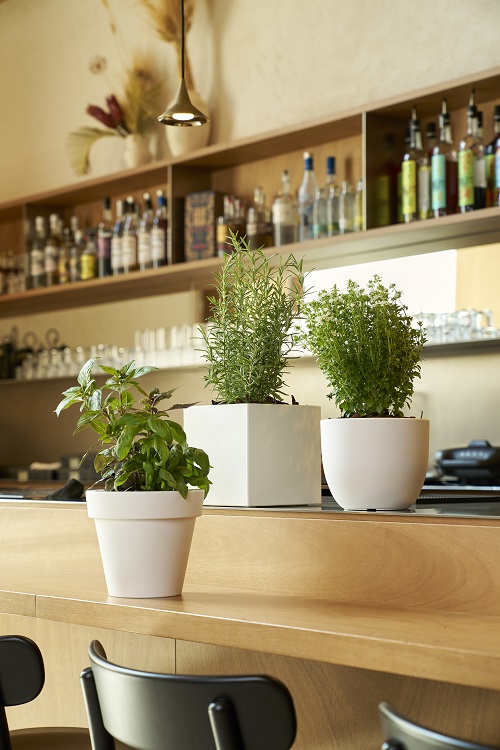
Perhaps the price is an easier lever?
Sabina Boscato: I’m not saying a garden center shouldn’t have a department dedicated to “basic” products: it would be great if garden centers were increasingly becoming places of inspiration. We would love to work with them and plan for themed display spaces, where pots are exhibited paired with plants to inspire customers with new home decor ideas. Thanks to the richness of our offering, we can meet the diverse needs of the public, always in harmony with nature, with solutions for indoor spaces—meant for homes but also for offices, shops, etc. If we shift towards the themes of furnishings, décor, and emotion, we also move away from seasonality.
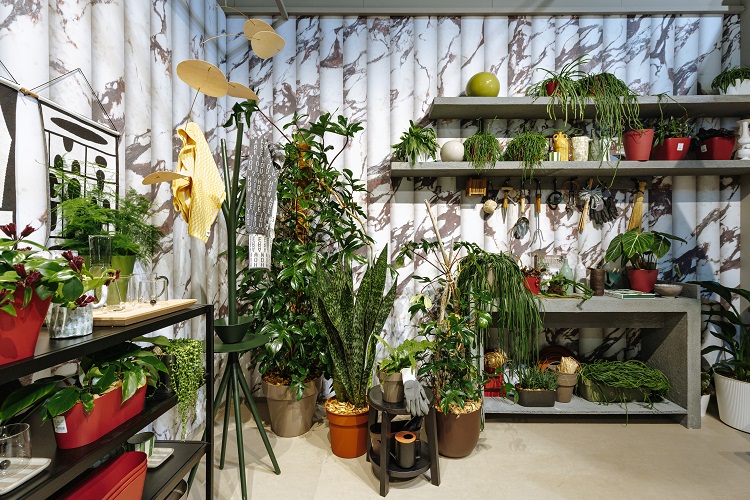
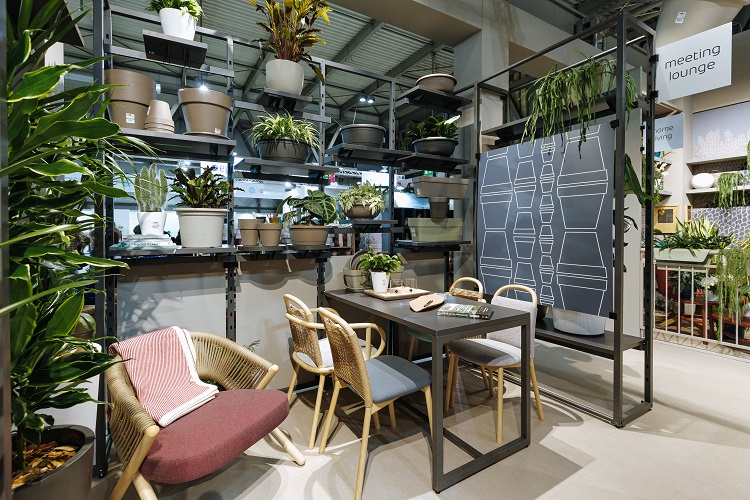
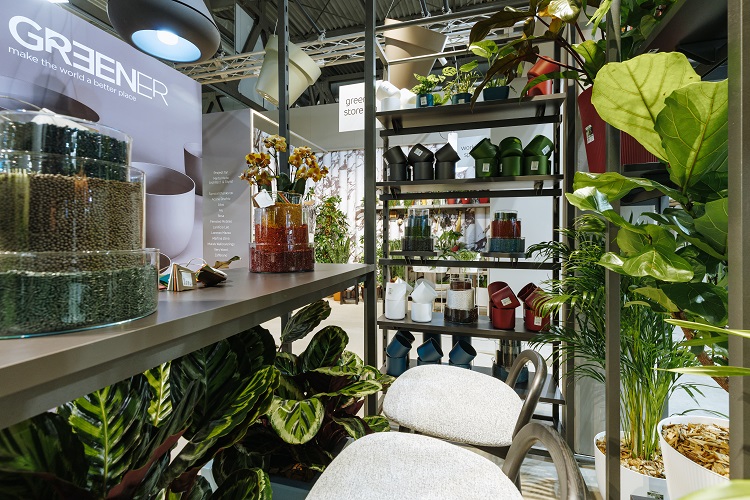
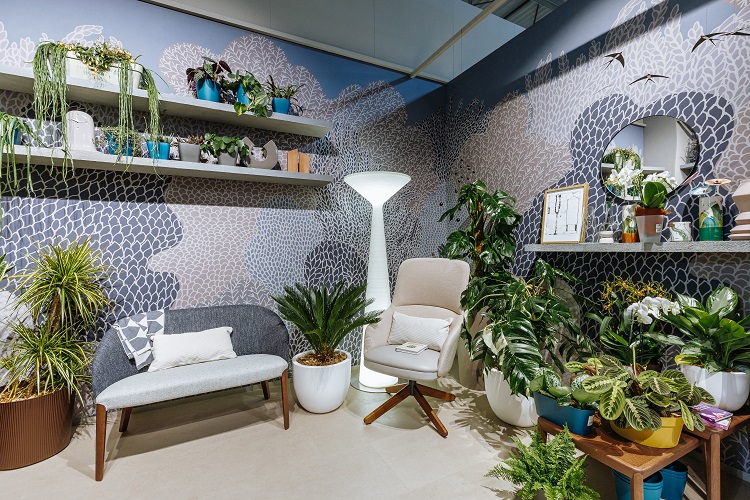
Recycled and certified
Sustainability is a sensitive issue for the plastics conversion industries. What is your vision?
Sabina Boscato: Starting this year, we are the first flowerpot manufacturer to have obtained the Environmental Product Declaration (EPD) certification. This attests that our Greener line is made with 70% recycled material.
While almost all companies have embraced new recycled materials, we felt the need for transparency and sought certification from a third-party body to confirm the actual percentage of recycled content.
You also created a Sustainability Report…
Sabina Boscato: Yes, we published the Sustainability Report, which, starting in 2021, has already reported on our company’s activities across various areas, according to European standards. We use an external body to measure our company performance, allowing us to improve it year by year. We’ve had environmental certification for quite some time, and we’re currently organizing the installation of solar panels to use renewable energy sources. The Sustainability Report is simply another step in a journey that began years ago.

